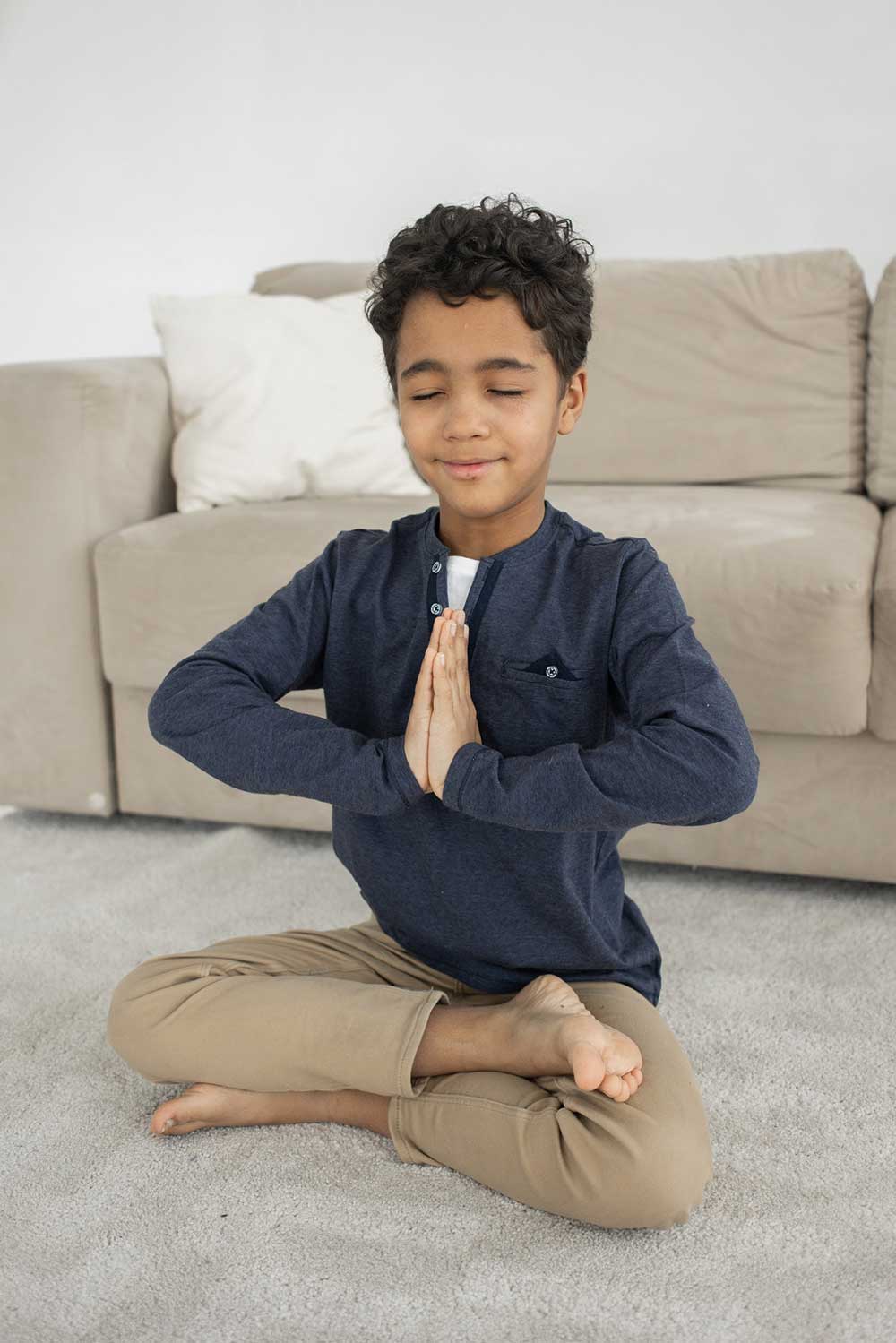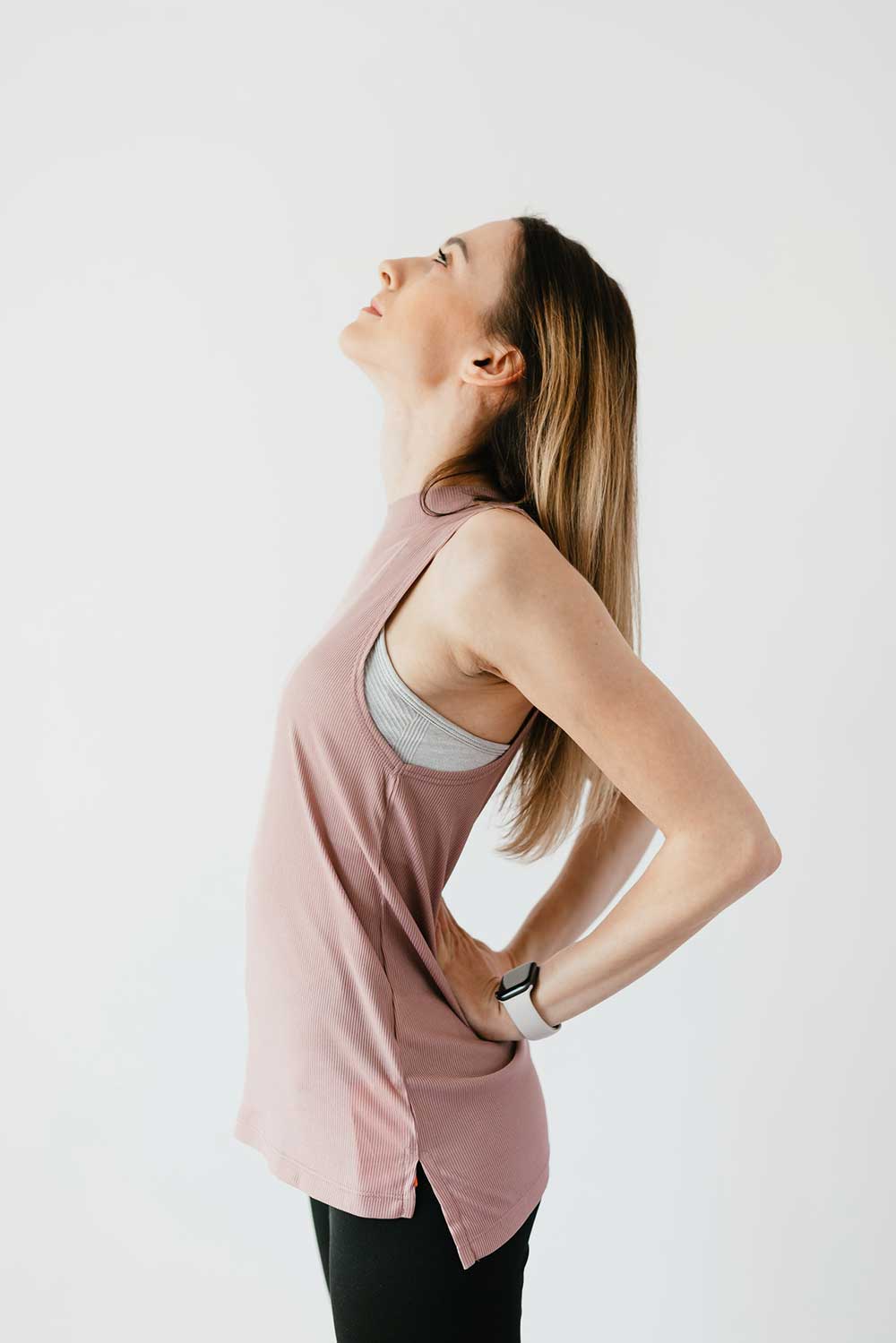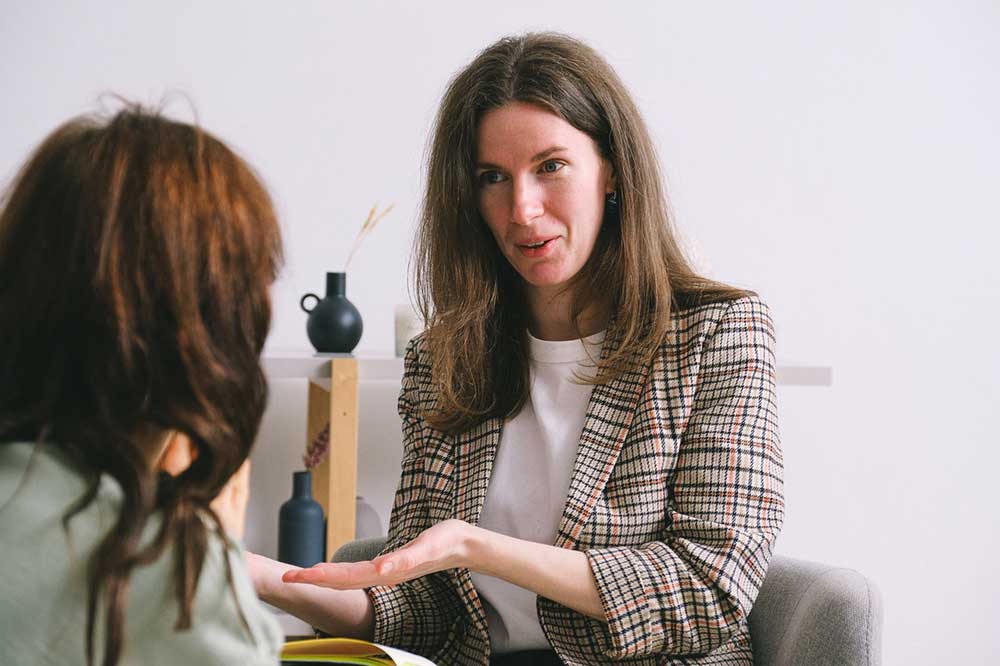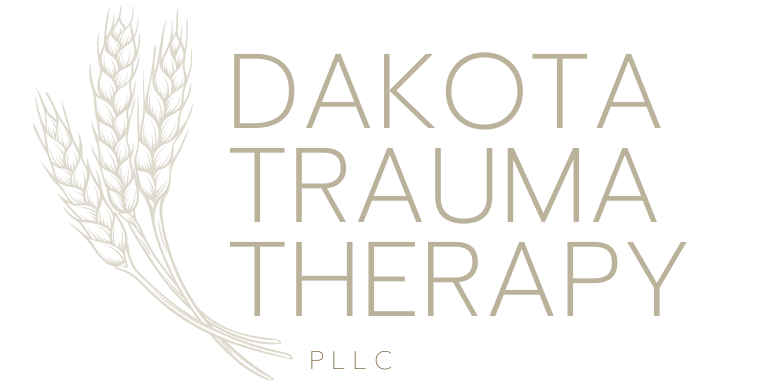Anxiety is characterized by feelings of concern, dread, and trepidation. Anxiety is commonly felt on cognitive, psychological, and physical dimensions. (1)
When a person feels anxious, for example, he or she may have unpleasant or unsettling thoughts. On an emotional level, one may feel frightened or out of control. Severe anxiety is also sometimes accompanied by physical symptoms such as shivering, sweating, or difficulty breathing. (2)
These are frequent symptoms among individuals who have anxiety. People suffering from panic disorder and anxiety attacks are all too aware of the difficulty of coping with anxious sensations. (3) Anxiety might feel as though it is overtaking or that it is entirely out of one’s command.
Anxiety is an unavoidable aspect of life. However, people occasionally endure lengthy episodes of anxiety, which can have an impact on their social life, work-life, or individual growth.
Anxiety can develop into a disorder in some circumstances. Anxiety disorders develop when anxiety and stress are both chronic and highly disruptive. Anxiety issues frequently necessitate therapy. People seek a variety of coping strategies.
You can explore a variety of anxiety coping strategies. What works for one person may not work for another, and it may take some time to uncover the techniques that work effectively for you. However, if your anxiety is proving tough to manage, get expert help.
It is upsetting to suffer from anxiety or to witness a loved one suffer from it frequently, but there are measures you can take to get over it yourself or help someone with anxiety. If anxiety has a firm grip on your life, you may follow some easy strategies to control your anxiety. It all starts with recognizing the symptoms of excessive concern and learning the best techniques to deal with it.
Recognize the Signs and Symptoms of Anxiety
Recognizing the symptoms of anxiety is the first step in managing it. By being aware of its symptoms, you may make use of various strategies to minimize your anxiety symptoms and behaviors.
Anxiety can cause physical symptoms that interfere with one’s health and daily life. Stomach discomfort, nausea, digestive problems, headaches, sleeplessness, weakness or exhaustion, shortness of breath, elevated heart rate, sweating, trembling, and muscular tension are typical symptoms.
Additional physical symptoms may include dread of death, difficulty breathing, or feeling as if you are suffocating, numb or tingling feelings in parts of your body, and feeling hot or having chills.
When your body reacts to danger, you breathe quickly because your lungs are attempting to transport more oxygen through your body if you need to escape. This might cause you to feel as if you are not receiving enough air, leading to even more anxiety and fear. (4)
Tensed muscles prepare you to escape disaster swiftly, but continuously strained muscles can cause discomfort, tension headaches, and migraines. (5)
Adrenaline and cortisol are chemicals that cause an increase in heart rate and respiration, which might be beneficial when confronted with a threat. However, these hormones have an impact on digestion and blood sugar levels. If you are regularly anxious or nervous, repeatedly producing these hormones can have long-term health consequences. (6)
Learn about Anxiety
Knowledge is power, as the old saying goes. Learning everything about anxiety is crucial for healing. Examining the physiology of the flight-or-fight reaction, which is the body’s way of dealing with approaching threats, is one form of education. This response is improperly provoked in persons with anxiety disorders by events that are generally innocuous. Control over symptoms can be achieved with the help of sufficient knowledge.
Mindfulness
Mindfulness is a mental state distinguished by nonjudgmental consciousness of one’s current experiences, including sensations, thoughts, physical conditions, and surroundings. It allows you to detach yourself from your ideas and feelings without assigning them a positive or negative label. (7)
Mindfulness combats rumination and distress by centering your attention on the present moment. Mindfulness may be a helpful strategy for improving one’s ability to stay focused on the current moment. (8)
Mindfulness has been demonstrated in studies to assist people in coping with anxiety. (9) Mindfulness educates on coping with stress by being aware of what is going on in the present moment, rather than reacting instantly without knowing what emotions or reasons are at play. Thus, mindfulness provides for better adaptable responses to stressful circumstances by teaching awareness of one’s physical and mental state in the current moment.
There are a variety of ways how mindfulness works. First, it urges us to be honest about our feelings and embrace them. As a result, we can recognize, experience, and process our emotions more effectively. Mindfulness also encourages us to look at things from many aspects and acknowledge all of them for a fair conclusion.

Progressive Muscle Relaxation
Progressive muscle relaxation (PMR) is a strategy for reducing anxiety. All of the body’s major muscle groups are alternatingly tense and relaxed in this method. (10)
Other cognitive-behavioral therapy approaches, such as systematic desensitization, are frequently used in conjunction with progressive muscle relaxation. (11) However, simply practicing the method will give you more control over your body’s anxious reflex.
Steps involved in Progressive Muscle Relaxation Technique
Find a peaceful, distraction-free spot. Remove any tight clothes, spectacles, or contacts, lie down on the floor, or recline on a chair. Place your hands on your lap or the chair’s arms. Take a few deep, steady breaths.
Now focus on the following areas, keeping the rest of your body calm.
- Hold for 15 seconds while squeezing the muscles in your forehead. Notice the muscles tightening and tensing. Then, while counting for 30 seconds, progressively relax the strain on your forehead.
- Tighten the muscles in your jaw for 15 seconds. Then, while counting for 30 seconds, gradually loosen the tension. Take note of the sensation of calm, and proceed to breathe gently and evenly.
- Raise your shoulders toward your ears and hold for 15 seconds to generate tightness in your neck and shoulders. While you count for 30 seconds, slowly release it.
- Slowly make fists with both hands. Next, squeeze your fists into your chest for 15 seconds, pressing as hard as you can. Then slowly let go while counting for 30 seconds.
- Gradually increase the tension in your buttocks for over 15 seconds. Then, for 30 seconds, slowly relax.
- Over 15 seconds, gradually raise the tension in your quadriceps and calves. Squeeze as forcefully as you can on the muscles. Then, after 30 seconds, slowly remove the strain.
- Increase the strain on your foot and toes gradually. First, tighten your muscles as much as possible. Then, while counting for 30 seconds, progressively remove the tension. Continue to inhale gently and evenly.
A comprehensive evaluation published in the journal BMC Psychiatry in 2008 demonstrated the usefulness of relaxation training, including PMR, in anxiety management. (12)
If you are searching for an evidence-based coping strategy for anxiety, then PMR can be a feasible choice.

Breathing Techniques
Several breathing exercises might help you manage anxiety symptoms while you are getting anxious.
Chest Breathing Vs. Diaphragm Breathing
When people get nervous, they generally take quick, shallow breaths from their chest. This style of breathing, known as thoracic or chest breathing, disrupts the body’s oxygen and carbon dioxide levels, causing an elevated heart rate, dizziness, muscular tension, and other physical symptoms. Your blood is not being oxygenated adequately, which may indicate a stress reaction that contributes to panic and anxiety. (13)
On the other hand, diaphragmatic or deep breathing activates the parasympathetic nervous system, a branch of the peripheral nervous system that regulates pulse, blood flow, breathing, and digestion. Deep breathing assists you in suppressing the fight-or-flight response to psychologically or physically frightening circumstances. (14)
Alternate-nostril Breathing
Alternate Nostril Breathing, or Nadi Shodhana, can have a significant effect on your body, mind, and nervous system. This is an essential and powerful technique that most people may use as a convenient and straightforward exercise to cleanse the mind and relax the inner existence. (15)
Alternate-nostril breathing entails closing one nostril while breathing through the other, regularly switching between nostrils. To preserve your posture, it is better to practice this style of breathing while sitting.
Try to complete ten rounds of this breathing pattern. Pause if you start to feel dizzy. Breathe properly after releasing both nostrils.
Belly Breathing
Anxiety and tension can be substantially reduced by 20 to 30 minutes of belly breathing each day.
Find a quiet, comfortable spot to sit or lie down. Put one hand on your upper chest and the other on your abdomen, just below your ribs.
Allow your belly to relax without tightening or clenching your muscles. Slowly inhale through your nose. The air should travel into your nose and downward, such that you can feel your stomach rise and sink inward with your other hand. Slowly exhale via slightly pursed lips. Keep an eye on your hand on your chest, which should be fairly motionless.
4-7-8 breathing
The 4-7-8 breathing method, also known as relaxing breath, includes inhaling for 4 seconds, holding for 7 seconds, and exhaling for 8 seconds. This breathing technique is intended to alleviate anxiety or assist individuals in falling asleep. (16) Some proponents say that the approach allows people to fall asleep in less than a minute.
The 4-7-8 breathing method necessitates concentrating on taking long, deep breaths in and out. Since it promotes calmness, rhythmic breathing is an essential component of many meditation and yoga exercises.
Lion’s Breath
Lion’s breath is a pranayama technique that is claimed to relieve anxiety, remove toxins, and strengthen your throat and upper chest. It is also known as Lion Pose in yoga. Lion’s breath, or simhasana in Sanskrit, is a very beneficial deep breathing exercise in which you put out your tongue and scream like a lion. It can also help you relax your face and jaw muscles, reduce stress, and enhance your cardiovascular functioning.
To make breathing exercises work for you, you must pay attention to your body and be aware of how anxiety affects your daily life. If you still have significant anxiety after practicing deep breathing, see a mental health professional or a doctor for evaluation and treatment suggestions.
Nutrition
Magnesium insufficiency can lead to anxiety, melancholic depression, and sleeplessness due to its ability to relax muscular tissue. (17) Vitamin B and calcium deficiency can significantly aggravate anxiety symptoms.
Vitamin B and calcium deficiency can significantly aggravate anxiety symptoms. Make sure to incorporate wholegrain cereals, leafy green veggies, and low-fat dairy items in your regular diet. Whenever available, choose fresh, unprocessed meals. (18)
Nicotine, caffeine, and stimulant substances like caffeine-containing pharmaceuticals cause your adrenal glands to release adrenaline, which is one of the most common stress hormones. (19) These should be avoided at all costs. Salt and other chemicals like preservatives are also items to avoid.

Use of Objects for Anxiety
Anxiety is always around. It gets more prominent when you are in the wrong position. To perform at the moment, it is often essential to alleviate anxiety right away. Carrying a tiny object with you to soothe yourself and alleviate tension is a great way to accomplish this.
When anxiety rises, focusing on a tiny thing might help you relax in the present. Comfort objects can help you teach your brain to focus on something other than your anxiety. There are fidget toys for anxiety and anxiety bracelets that can substantially aid in the reduction of minor anxiety symptoms.
You are not only lowering anxiety in the present by carrying and utilizing any object, but you are also preparing your brain to shift its focus when anxiety crops up.
Assertive Behaviour
Becoming assertive involves conveying your needs, wants, feelings, ideas, and opinions to others straightforwardly and honestly without offending anyone’s feelings purposefully. Since they are frightened of disagreement or think they have no right to speak up, people with anxiety disorders may have difficulty being assertive. Inactively relating to others, on the other hand, decreases self-esteem and increases worry. Therefore, learning to act assertively is essential for boosting one’s self-esteem.
Problem Solving
Some people with anxiety are prone to stress, who worry about an issue rather than actively resolving it. Attempting to break down an issue into its constituent parts and then decide on a course of action is useful for managing generalized anxiety and depression. Structured problem solving (SPS) is the term for this method.
SPS is a taught technique that allows you to take a step back and assess your issues, big or little, in a more effective and systematic manner. It is a cognitive technique that is popular in personal coaching and has been shown to aid with anxiety symptoms. (19)
Psychotherapies
When none of the strategies work and your anxiety symptoms continue to worsen, you should seek professional help from a mental health expert.
Cognitive-behavioral therapy (CBT)
CBT is a type of psychotherapy that focuses on altering anxiety-inducing habits of thinking and beliefs. This therapy is based on the notion that beliefs influence thoughts, which in turn impact emotions and behavior. Reasoned self-talk, reality testing, focus training, cognitive challenging, and cognitive restructuring are some of the cognitive therapy techniques. (20)
Eye movement desensitization and reprocessing (EMDR)
EMDR therapy reduces anxiety by regulating eye movements while picturing unpleasant events and then redirecting your focus to more positive ideas. While EMDR treatment is becoming more popular in the mental health field, it still does not have the same degree of acceptance as therapies like CBT.
During this procedure, the therapist instructs the client to pay attention to the feelings, pictures, and emotions that they are experiencing, gradually shifting their focus away from unpleasant ideas and toward more positive ones. As a result, anxiety continues to subside, and the person regains control of their emotional situation.
One of the advantages of EMDR therapy is that it does not require you to talk about psychological trauma, making it particularly appealing to people who have difficulty articulating their experiences or who find them too distressing to discuss. (21)

Medication
Medicines must be viewed as a band-aid rather than a long-term cure for anxiety disorders. Psychological therapies have been demonstrated in tests to be far more successful than medicines to cope with anxiety in the long run. While other treatment choices take effect, your doctor may prescribe a short course of tranquilizers or antidepressants to help you manage your anxiety symptoms.
Conclusion
It is common for people to feel anxious in reaction to stressful events or situations.
Anxiety may be managed in various ways, including immediate tactics for calming anxious thoughts and sensations. Maintaining a healthy lifestyle might be a long-term coping technique. On the other hand, anxiety that has become disruptive to daily life might be a symptom of an anxiety disorder.
These coping skills for anxiety may not work in some cases, and the person will need to seek professional help. In addition, people who suffer from anxiety regularly should seek proper therapy and treatment.

